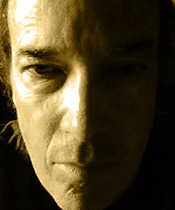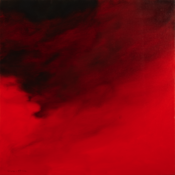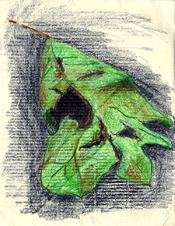Self-taught visionary artist. Painted every sunset for 11 years through 2016. Bio here. William Van Doren art also on Facebook and Instagram, and art prints on Pixels.com/Fine Art America. Author of the non-holiday book 47 Minutes on Christmas Eve. Coming in 2019, Into the Sunset: Paintings and Notes from 4,000 Nights.
VAN DOREN ON THE SUNSET SERIES
SUNSET SLIDESHOWS
Copyright © 2016 William Theodore Van Doren. All rights reserved. Reproduction in whole or in part without permission is prohibited.





Images of the Sunset
This all started – well, in a way the change really started the moment I began painting sunsets and sunrises over 14 years ago. From the beginning, there’s always been tension between two tendencies.
On one side there’s what you might call just keeping the appointment with the sunset – just doing it – being there and painting. Entailed in this are the many implications, meditative and metaphysical, of ‘following the sun’.
On the other side, there’s the goal of painting a certain kind of image – an aesthetic goal. In other words, making a damn good painting.
To paint the sunset every day – and for two years both sunrise and sunset – especially while earning a living doing something else – means the painting you make is the painting you get. There’s no time for do-overs or revisions or long processes of development or elaboration of any one image. Everything is alla prima – done in one go. They are whatever they are.
Of course, it’s not only a matter of time – there’s also the kind of sky that happens on a given day.
From the beginning, I was – I think necessarily and even productively – divided. Do you want it fast or do you want it good? It had to be fast or the whole project would break down. It had to be good or there would be little joy in continuing. These two aspects were always in play – in a sort of balance.
Adding this blog – starting in April – intensified the tension.
First, the added steps involved in posting, plus writing, meant more pressure on the available time. Now I needed not only to paint but to cut the painting out of its watercolor block (for example), tape it to a wall for shooting, clean brushes, wash hands to avoid clogging the Nikon with cadmium yellow, adjust lights, shoot, offload, save file, upload, write, and preferably do all of this before everyone in this part of the world had gone to bed – and in time for some dinner! (We have dinner late, so in summer these things collide.)
But second, communicating with you – you know who you are! – also has meant I’m more aware of the qualities of each image.
Until now, I resolved this tension by understanding that the value of the series resided both in the fact that I went out every day and painted the sky and in the way I painted it. If they weren’t of a certain quality, doing them every day wouldn’t mean much. Yet doing them every day imbued them with a sort of message about the passage of the days – a relationship with time.
So, I resolved the tension by not resolving it, because it can’t be completely resolved. I accepted both sides. But the balance can shift. And now I think it has.
At this point, from stage left, enters my brother Steve (a metallurgist by profession, developing materials for aerospace). Then, from stage right, in honor of Bastille Day, a Frenchman, Marcel Proust. More precisely, I’ll bring in one of his translators, Lydia Davis. They helped me see where this was going.
So, at our lunch in Frederick the other day, Steve said something to me that was very similar to the sort of thing people will say from time to time. He really liked the painting of a particular sunset (June 15th) – and then he added something like, “Not that I don’t like them all, but that one seems special.”
I knew what he meant because I often feel the same way. Every so often this everyday process yields something that is more remarkable, in and of itself, as an image.
I think I was ready to hear his comment: I felt I wanted to do more of those kinds of images.
Now, I should preface the following by stipulating that no one who has just finished reading their very first volume of Proust (Swann’s Way, from In Search of Lost Time) should be allowed (1) to comment on it in public, and especially and above all (2) to draw any sort of connection between it and their own work. It isn’t done, and should never be done.
In my defense, I will say that I read it very ... very ... slowly ... over a period of at least six months, almost exclusively on Sunday mornings. And you thought I didn’t go to church.
(I know a couple of people who could read it in one Sunday, but Gillian, Sarah, sorry, hate you both.)
Anyway, I’m not actually going to get into Proust, just the introduction by Lydia Davis, which I read after I finished the book, and which, like Steve’s remark, probably struck me because I was ready for it:
I thought about how I’d often said that the sunset paintings completely submit to time but also suggest something beyond time. I realized (for the first time!?) that one way the sunsets deal with time is by holding back a piece of it.
I had written the following a few days ago, before I read Lydia Davis. I ended up not posting it because it didn’t feel right at that time. But now maybe it does:
What I realize, thanks to Stephen L. Van Doren and M. Proust (together again for the first time) (don’t worry, Steve won’t mind that a bit), is that just bravely going forth and painting the sunset every day and occasionally getting a really strong image isn’t enough for me.
To find the timelessness inside time, I need to go for whatever art can get.
I know not every image will work, but ... we’ll see what happens.